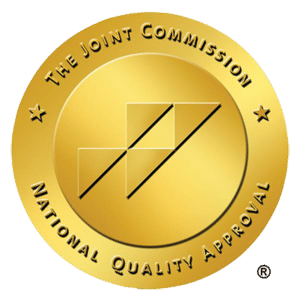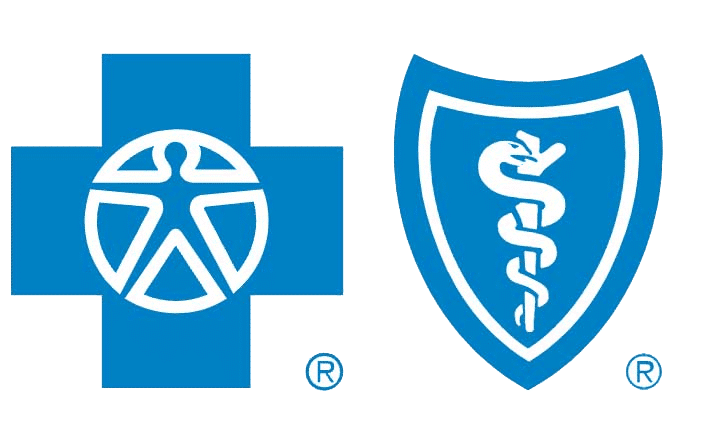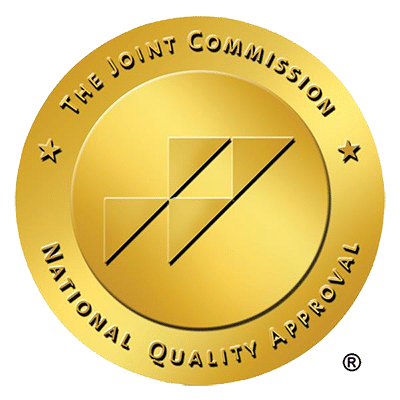It is essential to be aware of the signs and consequences that come with abusing a powerful synthetic opioid such as fentanyl, in order to understand its devastating effects on individuals and their families. By gaining an understanding of what addiction looks like for this substance, how severe withdrawal can become when misused, and the potential risk posed by overdose risks – recognizing all these pieces helps empower those battling against it’s addictive grip. In summation, fentanyl addiction needs recognition if we’re ever going to truly face off against this sinister monster hiding amongst us.
Key Takeaways
- Fentanyl addiction can cause significant behavioral, physical and psychological changes.
- Professional help is essential for managing severe withdrawal symptoms and preventing relapse.
- Fentanyl has had a devastating impact on society, with over 70,000 overdose deaths in 2021 alone.
Deciphering the Signs: Hallmarks of Fentanyl Addiction
Fentanyl, a strong synthetic opioid painkiller used for severe suffering relief, is much more potent than other opioids such as morphine, up to 100 times. The abuse of fentanyl can lead to overdose and worsen relationships with family and friends, occupational failure or academic success hindrance. For this reason, it’s vital that the warning signs of addiction are identified at an early stage in order to address it properly before things get too serious. This powerful yet potentially dangerous narcotic works 50-100x better than its close relatives when relieving terrible pain from medical conditions – making correct use imperative if avoiding misuse/abuse is desired./p>
Behavioral Changes Indicative of Fentanyl Use
Certain behaviours associated with fentanyl addiction can be observed, such as abrupt shifts in moods, isolating oneself from people around them, and disregarding duties and responsibilities. Financial matters may worsen and the person might become secretive about their actions or display a decrease in academic/work performance. When fentanyl abuse intensifies, it is likely to result in someone obsessed with getting more of this drug, which could lead to unlawful activities for that purpose.
It is key that family members and friends take note of these indications so they are able to assist those affected by offering help before things get out of hand while also encouraging professional assistance to tackle this issue at its core. Together we all have an important role in combatting symptoms related to Fentanyl use!
Physical Symptoms of Fentanyl Dependence
Fentanyl addiction has various physical symptoms associated with it, such as a decreased respiratory rate and nausea. It may also cause serious issues like breathlessness or even complete failure of respiration due to its depressive effect on the breathing pattern. People that have been using this drug for a long period often experience stomach aches, gastrointestinal discomforts and constipation too. All in all, these are some signs which can be linked back to fentanyl use and should not be overlooked if you suspect someone is addicted to it.
Psychological Impact of Fentanyl Abuse
Fentanyl addiction can lead to serious mental health issues such as substance-induced psychosis, mood disorders and fentanyl use disorder. Emotional turmoil brought on by long term abuse of the drug often makes it difficult for individuals to escape its addictive properties.
The psychological effects linked with abusing this powerful opioid include depression, anxiety, cognitive impairment and unpredictable changes in behavior or attitude (mood swings). The danger is even more heightened when using fentanyl over an extended period of time. Increasing their risk factor towards developing greater psychiatric disturbances related directly to substance abuse due to the narcotic’s strength.
It is critical that those struggling with a dependence on these drugs seek help from medical professionals who specialize in treating people addicted to opioids like fentanyl before things become worse.
Want to Learn More?
Our addiction recovery team is here 24/7 to answer your questions or to get you help.
The Severity of Fentanyl Withdrawal
Managing the withdrawal symptoms of fentanyl addiction is a complicated and uncomfortable process, with effects being felt within 8 to 36 hours after last opioid use. The suffering can be so unbearable that some may even return to using opioids in order to avoid it. Proper medical help during the course of withdrawing from fentanyl is imperative for successful recovery. Fentanyl withdrawal brings on various discomforts which must not be ignored if individuals are looking forward to leading an opiate-free life again.
Recognizing Withdrawal Symptoms
Fentanyl withdrawal has been known to cause a wide range of symptoms, including muscle aches, nausea and vomiting, insomnia as well as anxiety. Intense cravings for the drug can also be present. As quitting such powerful narcotics is not an easy feat due to severe withdrawal effects that come with it, professional help must be sought in order to manage them adequately during the detoxification period.
The timeline of fentanyl withdrawal may vary from person-to-person making expert assistance even more essential when going through this process since without it successful recovery could become much harder or impossible altogether. All signs point towards evidence showing just how vital medical support is required while trying to overcome some of its most serious side effects like those brought on by abrupt cessation associated with these particular drugs.
Managing Severe Withdrawal Symptoms
Fentanyl withdrawal, along with its associated symptoms, is managed primarily through medical support. This includes providing medications such as clonidine or buprenorphine to lessen the severity of withdrawals, psychological assistance for addressing both cravings and emotional issues related to fentanyl use, and monitoring vital signs in case any complications arise during detoxification from this drug.
The Overdose Threat: Identifying Fentanyl Overdose Signs
The risk of a potentially fatal fentanyl overdose is significantly higher due to its extraordinary potency that makes it 50-100 times stronger than morphine. People need to be aware of potential warning signs and take action if they suspect an overdose – slow or shallow breathing are telltale symptoms. Immediate medical help is essential in order for the individual’s life to be saved. Timely recognition and response can make all the difference when it comes to fentanyl overdoses.
Emergency Response to Fentanyl Overdose
In the case of a fentanyl overdose, acting quickly is essential. Dialing 911 right away and administering naloxone if you have it on hand can help reverse the effects temporarily by blocking opioid receptors in someone’s brain with its active ingredients. This medication comes without prescription from pharmacies or particular organizations, who may provide training to use them safely – making family members, friends or even bystanders able to utilize this kit for aid.

The Journey to Recovery: Approaches to Treating Fentanyl Addiction
When it comes to fentanyl addiction treatment, taking a comprehensive approach is essential. People who are struggling with drug abuse can find many types of treatment options available at specialized centers offering help for this specific issue. From inpatient therapy programs and outpatient recovery services, all methods should be considered depending on the individual’s needs, consulting health care professionals will prove beneficial when making these choices. Ensuring that any form of opioid addiction including fentanyl is treated properly holds key importance, as successful recovery rely heavily upon effective intervention plans being put into action right away.
Personalized Addiction Treatment Strategies
Individualized strategies for addiction treatment are essential in creating plans that meet an individual’s needs and circumstances. To do this, multiple treatments can be employed including medication-assisted therapy, counseling sessions, behavioral therapies and support groups. This form of specialized care enables medical professionals to target the physical, mental and social influences on a person’s dependence with fentanyl while simultaneously raising their chances of rehabilitation success. Providing personal attention through tailored approaches is thus paramount when addressing matters concerning substance abuse problems.
Transitioning from Addiction to Rehabilitation
Transitioning from fentanyl addiction to rehabilitation necessitates obtaining professional help and support, like the services offered by SAMHSA’s National Helpline. It is important to think about available treatment options rather than attempting withdrawal without medical assistance as detoxification plays a vital role in successful recovery. Ongoing aid from organizations such as SAMHSA’s Drug Abuse Warning Network can furnish people with what they need for sustaining their sobriety while avoiding potential relapse of fentanyl abuse.
Navigating the Risks: Preventing Fentanyl Relapse
In order to ensure successful long-term recovery from fentanyl addiction, continuous support and relapse prevention strategies are key. These measures give individuals access to the appropriate tools and resources necessary for sustaining their sobriety while decreasing the likelihood of a return to drug use.
Professional treatment combined with creating an individualized plan as well as taking part in comprehensive approaches including therapy groups plus medication management offer effective means for preventing fentanyl relapses.
The Bigger Picture: Understanding Fentanyl’s Grip on Society
Fentanyl addiction has had a huge effect on society. In particular, the increasing overdose fatalities caused by fentanyl abuse are an incredibly concerning issue that needs to be addressed urgently. We must understand how prescription fentanyl plays a part in this opioid crisis and what can be done about it. This drug is proving to have major economic losses due to labor force reduction, social alienation and rising death rates from overdoses linked with its use. By tackling this epidemic head-on, we hope to curb the proliferation of these powerful drugs that so significantly impact our communities throughout America.
Fentanyl Addiction Statistics
The prevalence of fentanyl addiction has climbed dramatically in the last ten years, with synthetic opioids like fentanyl leading to an influx of drug overdose deaths throughout America. This past year alone saw over 70,601 individuals succumb to overdoses caused by these substances. Emphasizing that there needs to be effective strategies for prevention and treatment implemented quickly in order combat this concerning issue associated with abuse of fentanyl.
The Role of Prescription Fentanyl
Fentanyl is an extremely potent painkiller administered to treat serious pains. Its potency also makes it more liable for misuse and developing a dependency. The role of prescribed fentanyl in the opioid epidemic holds great importance. Leading to numerous overdose fatalities and emphasising on maintaining caution when prescribing this powerful synthetic narcotic. Recognizing the potential risks associated with fentanyl consumption plays a key part in solving these troubles while preventing additional destruction caused by said drug at both personal and social levels.
Summary
Ultimately, it is essential to recognize the struggle of fentanyl addiction and be aware of its various signs in order to best equip ourselves with both knowledge and resources for battling this powerful synthetic opioid. By being equipped appropriately, we can create a better future that’s free from drugs not only for us but also those close to us.
Frequently Asked Questions
What are the primary signs of fentanyl addiction?
People affected by fentanyl addiction may experience social withdrawal, constantly think about getting the drug, physical symptoms such as slowed breathing and constipation plus psychological difficulties like anxiety depression or mood swings.
How long do fentanyl withdrawal symptoms typically last?
Fentanyl withdrawal symptoms can begin as soon as 8 hours after the last dose and may persist for multiple days. These opioid-related side effects are associated with abruptly stopping or reducing a fentanyl dosage.
What is the main treatment for fentanyl overdose?
The most effective way to treat a fentanyl overdose is with naloxone, an antidote that can counteract the effects of opioids like fentanyl and reverse the results of overdosing.
What are some effective strategies for preventing fentanyl relapse?
Professional treatment, comprehensive approaches to recovery and constructing a relapse prevention plan are all key strategies for avoiding return to fentanyl abuse. These measures can help provide the necessary assistance in recovering from addiction while maintaining sobriety.
How does prescription fentanyl contribute to the opioid crisis?
Fentanyl, a powerful prescription opioid with the potential for abuse and addiction, is unfortunately linked to numerous overdose fatalities – unfortunately contributing to what we know as the devastating opioid crisis.
Related Posts

Critical Signs of Meth Addiction: Symptoms & Support Options
Wondering what are the warning signs of meth addiction? Early detection can be lifesaving. From drastic behavioral swings to ‘meth mouth,’ these symptoms are alarming

Essential Guide on How to Help Someone with Meth Addiction
If you’re seeking to understand how to help someone with meth addiction, this article is your immediate support guide. Encountering meth addiction within someone you

Recognizing the Warning Signs of Marijuana Addiction
Knowing the signs of marijuana addiction is vital for recognizing a serious problem that often goes unnoticed. In this article, we address the real indicators

Decoding Opioid Addiction Statistics: A Harsh Reality Check
What do the numbers say about the opioid crisis? Diving into opioid addiction statistics offers a sobering reality check: a surge in usage and deaths

Effective Strategies on How to Prevent Opioid Addiction
The key to preventing opioid addiction starts with being informed. If you’re seeking concrete steps on how to prevent opioid addiction, this article is for

How to Help Someone with Cocaine Addiction Effectively
Wondering how to help someone with cocaine addiction? It can feel overwhelming, but your role is crucial. In this guide, you’ll find understandable and practical















